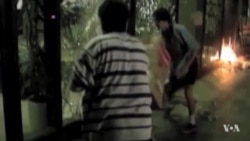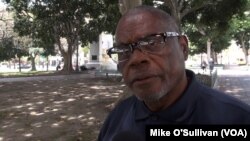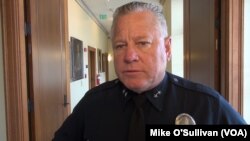Saturday, April 29, will mark the 25th anniversary of the outbreak of riots in Los Angeles that were sparked by the acquittal in 1992 of four white police officers accused of beating a black motorist, Rodney King. The city has been reflecting on the lessons learned and the work that remains to be done.
The beating was caught on videotape, and there was shock and disbelief that an all-white jury acquitted the officers. Among those calling for calm in 1992 was the city’s first African American mayor, Tom Bradley, who also expressed shock and dismay at the verdict.
Toll: 60 dead, 1,000 injured
But as protesters took to the streets, violence erupted through the city that claimed the lives of more than 60 people. More than 1,000 were injured and the toll in property damage passed $1 billion.
“I felt betrayed,” said Perry Crouch of the Watts Gang Task Force, a volunteer group of police, local leaders and residents. He had seen it all before, when the city exploded in the Watts Riots of 1965.
“The reason I felt betrayed,” he said, “is because in ’65, it was the same thing, police abuse. And 27 years later, the same thing.”
He said the city was a powder keg, and the verdict was the spark. As the images of the beating were replayed on television, the destruction and looting spread.
Deputy LAPD chief Phil Tingirides, at the time a police sergeant, led officers on the scene in 1992, where his squad car came under fire from a second story sniper.
“We went out and tried to stop some of the violence,” he said, “and what I found is that the department was completely unprepared.” Radio communications were overwhelmed the first night, and police and firefighters moved from site to site in a futile effort to stop the fires and quell the violence.
Federal officers were trying to help, and FBI special agent Carlos Narro was relaying information between local police and federal investigators.
“For me, it was just unbelievable, surreal, what I was watching,” Narro said. “It was sad.”
But it was not unforeseeable, Tingirides said.
“It really comes down to inequity and a lack of hope,” he said. “When somebody feels inequity, they feel powerless. When somebody feels a lack of hope, they just don’t care.”
Building repaired, relations weren’t
Most of the physical damage to buildings was repaired, but relations between police and African Americans remain tense in many places, from Baltimore to Los Angeles, “where people are still dropping out of school, where the incarceration rates are still high, and people of color are still disproportionately represented in those institutions,” said Charles Dorsey, executive director of the COR Community Development Corp.
Unemployment and crime rates are high in many inner city neighborhoods, where “our communities have seen generations of trauma,” said Delonte Gholston, a youth pastor at New City Church.
Lessons of the past
In Los Angeles, police, local officials and the community are discussing shared concerns through community groups like the Watts Gang Task Force, and a meeting at City Hall co-sponsored by the city and the Center for Religion and Civic Culture at the University of Southern California tackled the issue Tuesday.
The mayor, police chief and dozens of community leaders attended.
Could the riots happen again? Nothing of that magnitude, said FBI agent Narro, given improved communication among law enforcement agencies and better preparation.
There also are more minority officers today, following 12 years of oversight by a federal judge, starting in 2001.
And the makeup of the police force more closely mirrors the population.
“We have people that look like us and feel like us in a position of authority now,” said Crouch of the Watts Gang Task Force. “It wasn’t like that back then.”
Inner cities remain a potential flash point, however, shown by national protests in recent years over police shootings in cities around the United States.


















